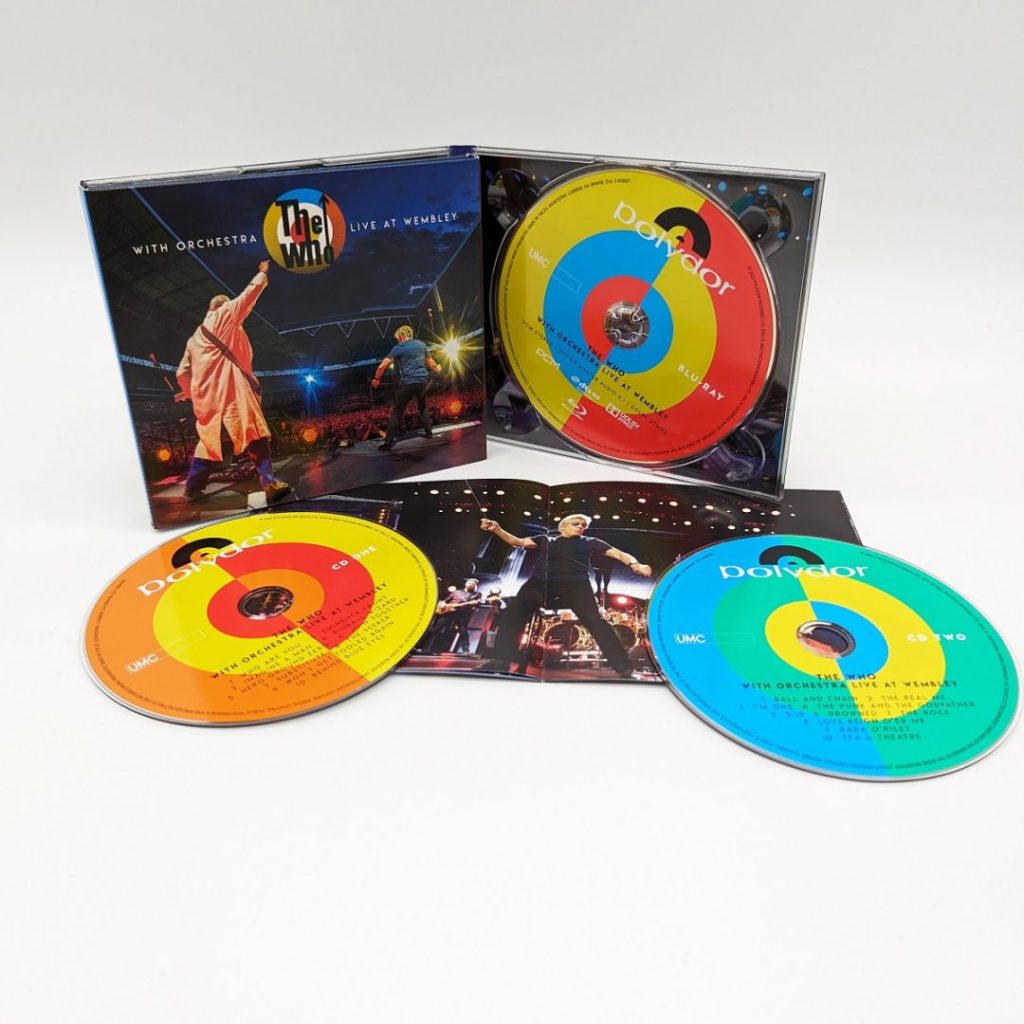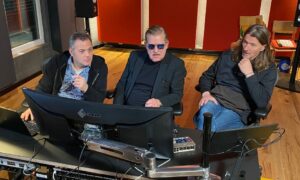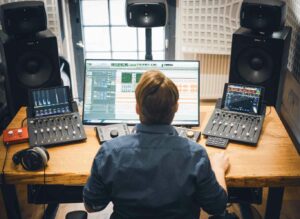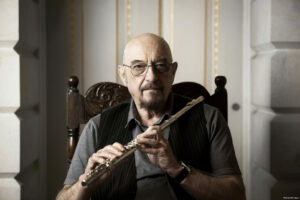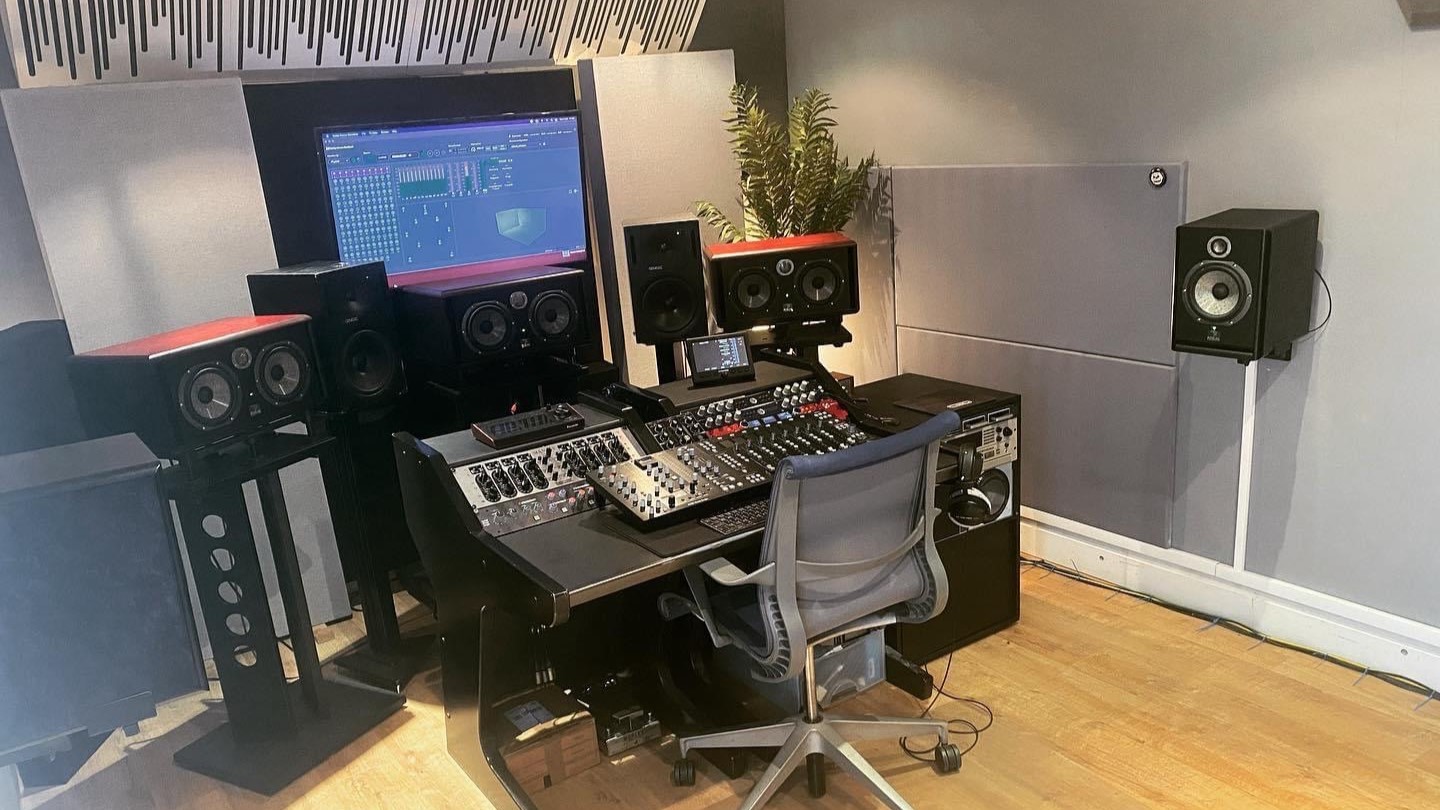
From his musical beginnings as a child to working with top artists and the development of Ambisonics technology, Richard Whittaker has experienced music production in all its facets. We spoke to him about how the mixing of music has evolved from its beginnings in mono to the current heights of immersive audio and what exciting prospects this holds for the future of the music industry. The interview was conducted by Christoph Diekmann.
Thank you very much for taking the time for this interview. I’m very happy to talk to you about the challenges of immersive mixing for Blu-ray. You can look back on a long and successful career as a sound engineer and have already worked with many artists. Can you tell us what made you decide to start mixing?
Even as a child, I had a deep connection to music. I have been playing in orchestras, bands, jazz, blues and classical music since I was nine years old. During my training, I had the opportunity to work with music technology, especially analogue tape recording, which I really enjoyed. I continued my studies and completed my Bachelor’s and Master’s degrees. My path led me to Ambisonics technology, which proved to be very valuable. I moved to London for my Master’s degree and worked in various studios at night while attending my courses during the day. In the end, I had to decide whether I wanted to do my Master’s degree or concentrate on my career, and I chose the latter. I have been working in music production ever since.
The evolution of music mixing has taken us from mono to stereo and now to surround and immersive audio. How has this development influenced your approach to mixing music?
The transition from mono to stereo and now to immersive audio has greatly influenced my approach to mixing music. Mixing in stereo and mixing in surround, be it 5.1 or Atmos, require different techniques. Although they have some similarities, they require different methods and considerations due to the large number of parameters. The technology behind Atmos and its growing popularity as a standard format is changing the game. Atmos offers an entry level of immersion that was previously not possible with formats such as 5.1 or 7.1, which required significant investment in equipment and room calibration. With Atmos, anyone can enjoy an immersive audio experience with just a pair of headphones. This accessibility represents a turning point in immersive audio technology.

Do you mainly mix with headphones or do you use a 7.1.4 setup for your work?
My main mixing system is a 7.1.4 room that is approved and calibrated for Dolby Atmos. I start by creating a mix that sounds good in the room and then use headphones for comparison and detail work. When I’m happy with the mix in the room and on headphones, I switch between the two to make sure it sounds good on different playback systems. However, I do not recommend mixing exclusively with headphones, as this can lead to sub-optimal results when the mix is played in an Atmos environment.
Immersive audio such as Atmos offers different experiences for studio recordings and live concerts. Can you tell us the main differences in your approach to mixing a studio album compared to a live concert?
Of course. There are limitations when mixing a live concert, as you have to capture the atmosphere of the concert. The audience must remain present while the band takes centre stage. I recently listened to the “Live in L.A.” Hendrix mix. The delays and the impressions that spread through the audience when Hendrix starts a solo – that was a really good idea. But you don’t have to pull out all the stops to make Atmos sound good. It is important to preserve the authenticity of what happens on stage. In contrast, studio albums offer more control and flexibility to shape the sound exactly the way you want it. With live albums, you have to work with the reality of the live event to maintain the presence of the audience while keeping the band at the centre.
At live concerts, the physical environment, the audience and the positioning of the band must be taken into account and effectively realised. In terms of the technology used, Atmos offers the flexibility to create an immersive experience for both studio albums and live concerts. While live albums traditionally aim to capture the intensity and mood of the event, immersive technology allows for a more faithful representation.
Yes, definitely! Recording The Who live at Wembley with an orchestra gave the sound a new dimension. Can you tell us whether it was a particular challenge to combine the band sound with the orchestra?
Not really. Combining the band sound of The Who with an orchestra was no great challenge. I already had experience mixing “Tommy Comes Alive” with an orchestra for Roger (Daltrey), and that was a solid base for this project. It was a seamless transition to a bigger sound in a bigger hall. The integration of the orchestra and the band worked well and it was a successful attempt.
It sounds great! I think the success of capturing the sound of the audience also depends on the venue. Different venues, such as open amphitheatres and closed football stadiums, present different challenges when it comes to capturing the atmosphere.
For this recording we used several audience microphones, including “real mics”, “mid mics” and two sets of “front-of-house” microphones. This gave us several options to work with, and we had to work with delays to create a coherent and immersive sound experience. In the end, we were able to create a dynamic and enveloping sound that conveys the experience of a live concert.
Were you also involved in the recording process or did you only work on the mix for this live performance?
I was not involved in the live recordings for this project. My work began when I received the finished recordings and was responsible for the mixing in the studio. With all the different microphone recordings, it was a very big session. It was quite challenging, but we managed it.
Yes, I think you did a very good job. When creating the immersive mix, did you start with a stereo mix as a basis or did you go straight into this project with the immersive mix?
I started this project with the stereo mix. Once the stereo mix was finalised, I used it as a guide to adapt the mix for Atmos. Gareth Johnson, Roger and Keith Levenson and I worked together on the mix.
Can you give us an insight into the approach and time management required for this project?
The mix took a lot of time due to the complexity of the session. There were many logistical challenges to overcome to ensure that everything came together in one session. I prefer to work on a mix in a single session, even if that has its limits. That gives the mix a natural atmosphere, and that’s how I like to work. In this case, the stereo mix alone took about two to three months of work with interruptions. Once the stereo mix was approved, we used it as a reference to convert the mix to Atmos. The Atmos mix also took some time as I referenced it in various studios and made small adjustments to make sure it sounded good. In total, the transition from stereo mix to Atmos took about a month.
My approach was to keep the energy and mood of the live performance while adapting it to Atmos. It was important to maintain the intensity of the performance, the presence of the band and the atmosphere of the audience. I wanted to create an immersive experience where the listener has the feeling of being in the stadium.
Listening to it, I felt like I was in the stadium [lacht] .
That’s what we’re aiming for! (laughs)
I have the impression that artists have to rethink their approach in order to adapt their music to these new possibilities. How did the artists react when they heard that their compositions would be highlighted in this way and, in your experience, are they more sceptical about immersive audio because they are so used to stereo and 5.1?
They said things like “Yes, great! “Go for it, sounds great!” There wasn’t really much feedback. They just really liked it. I was actually expecting suggestions for improvement and other feedback. But everything went well.
Some are very open to immersive audio and are looking forward to exploring their music in this direction. Others are more sceptical, some don’t even want to consider it. I try to convince them. It can be a challenge to sell this experience, but once they hear it, they are excited. But yes, sometimes it is difficult to convince artists.
For sure, I think listening is the key to successfully changing their minds about it.
Looking to the future, how do you see the prospects for immersive audio in the music industry and are there any developments or trends you expect to see in the world of immersive audio?
I believe that immersive audio will quickly gain in importance and become accessible to a wider audience. The Metaverse will take immersive audio to a whole new level. Major brands are investing heavily in virtual reality and virtual shops – the potential is incredible. Even if some technologies are not yet fully developed, they will revolutionise the way we experience music as they become more accessible to consumers. I expect immersive audio to have a big impact on the music industry, just as stereo once changed mono.
Do you think there’s no turning back and immersive audio will become the new standard?
I hope so. [lacht] We need to evolve and listen to music the way it’s meant to be heard, rather than limiting ourselves to two speakers.
Do you work on your mixes in the same studio setup for stereo and then adapt them for immersive audio or do you work in a different setup?
I work in the same studio setup, which is a 7.1.4 configuration. My approach is to start with stereo, which is still the predominant format, and then move on to Atmos. Although we may see a trend in the future where Atmos comes first and stereo as a secondary format, stereo is currently the basis on which I build my immersive mix.
Given the variety that Blu-ray offers, are sound quality and perspective crucial elements of your work?
Absolutely. Even if not everyone has access to high-quality Blu-ray players and 7.1 systems, we strive for the best possible sound quality. In an ideal world, we would always strive for the highest quality. But if a certain loss of quality means that more people can enjoy immersive audio, we are prepared to make this compromise. As the technology becomes more accessible, more people will use it and the quality of immersive audio will continue to improve.
Thank you very much for the interview, Richard. We appreciate your insights!
Thank you, no problem, Christoph. Have a great day!


